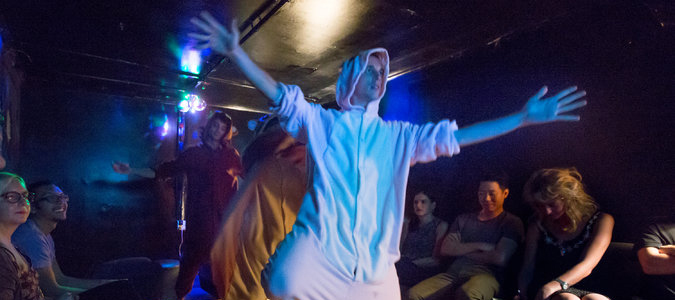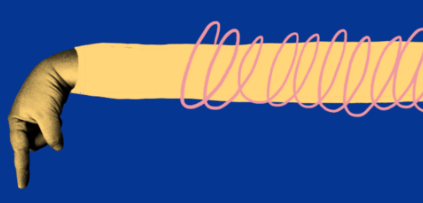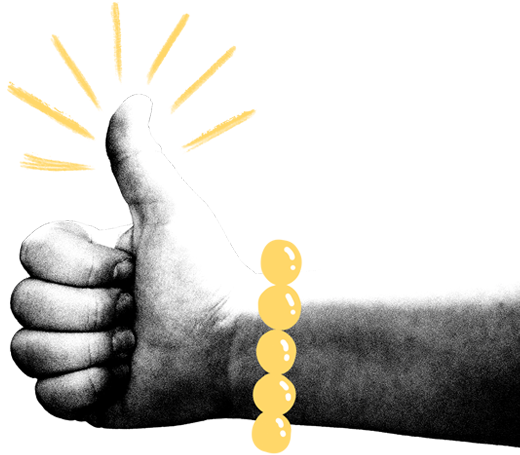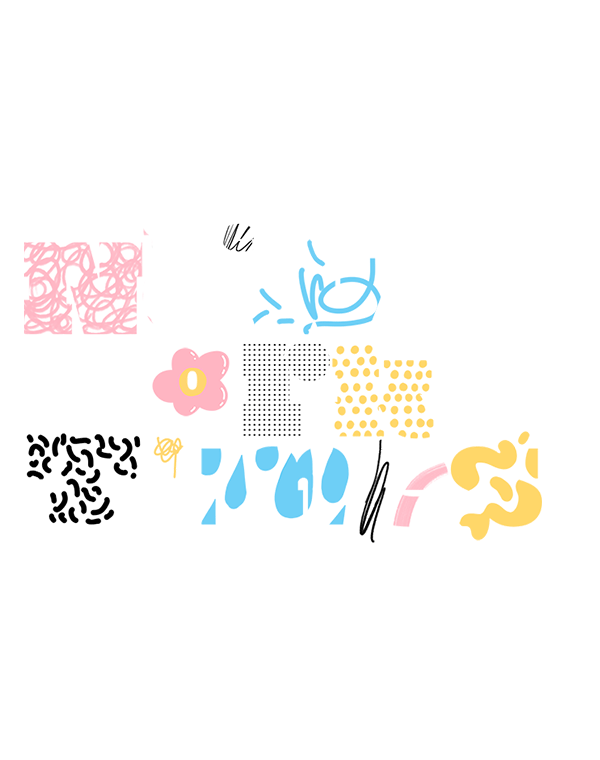

Dead Behind These Eyes
Opening Night: August 29, 2014
Closing: September 19, 2014
Theater: Sing Sing Karaoke
Dead Behind These Eyes: A Karaoke Play is a piece about pop music, love and apathy. Three characters in a karaoke room rail against the world, and mourn the big, bold, important lives they were supposed to live, drowning their sorrows in booze, song, sex and cigarettes. Using text from John Osborne’s iconic play of disaffected youth Look Back In Anger, alongside lyrics from Britney Spears, Jeff Buckley, Prince and others, the piece explores political and social participation through the microcosm of the karaoke parlor.
BUY TICKETSREAD THE REVIEWS:
September 1, 2014
For some people, the word “karaoke” means an evening of fun musical entertainment shared with friends. For others, it evokes fear incarnate: the desperate worry that someone is going to make you get up and sing. Whichever camp you fall into, you will need an adventurous spirit (or a stiff drink) to go to Dead Behind These Eyes. No, you will not be made to sing, but you will experience bizarre, confrontational, and surprisingly sexy pop culture performance art. In the intimate confines of one of Sing Sing Karaoke’s private rooms, this piece is as site specific as you get. A microphone wielding performer looks you in the eye and declares, “Why don’t we play a little game. Let’s pretend that we’re human beings and that we’re actually alive.“ Cue a sing-along of Katy Perry’s Firework. Dead Behind These Eyes is a true post-modern mash-up, weaving fragments of text from John Osborne’s 1964 play Look Back in Anger with pop music, devised movement, audience interaction, and reflections on social media. Balancing so many elements is initially disorienting. Despite a claustrophobic, somewhat messy start, the piece quickly builds a visceral, exhilarating environment.
READ THE REVIEWSeptember 2, 2014
In a black-walled basement room at an East Village karaoke bar, we received the welcome news: No one would be forced to sing. The makers of Dead Behind These Eyes, which is billed as a karaoke play, understand the need in this era of immersive theater to keep the bashful from bolting. But how many shy people does it take to thwart an interactive performance in a tiny space? Among the gaggle of a dozen or so people gathered Saturday night beneath a pair of mini disco balls, few were extroverts, and the site-specific piece never did jell. It’s fair to ask: How much of that was our fault? Not all of it. Created by the company Sister Sylvester and presented with the Abrons Arts Center, Dead Behind These Eyes repurposes dialogue from John Osborne’s Look Back in Anger — the venomous 1956 drama of class conflict and youthful disaffection — alongside a choppy blend of video, dance and song lyrics, whether spoken or sung. There is, in fact, not all that much singing, and very little by audience members.
READ THE REVIEW



















